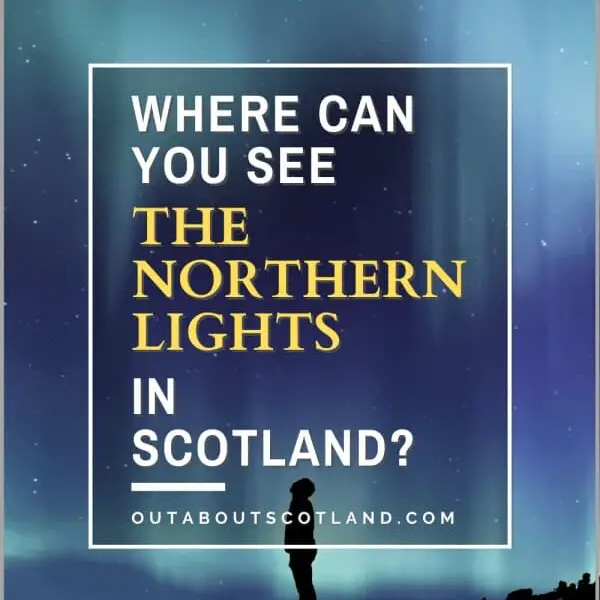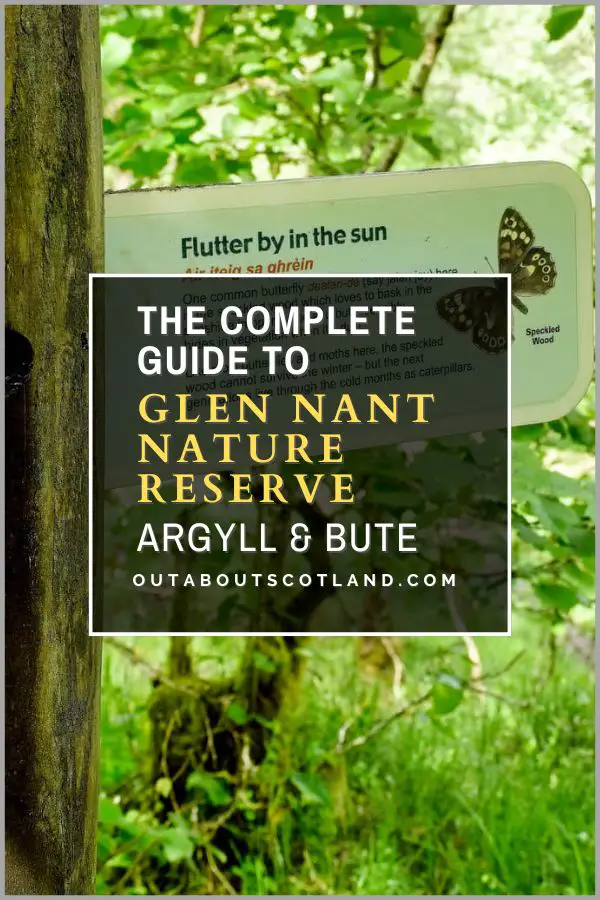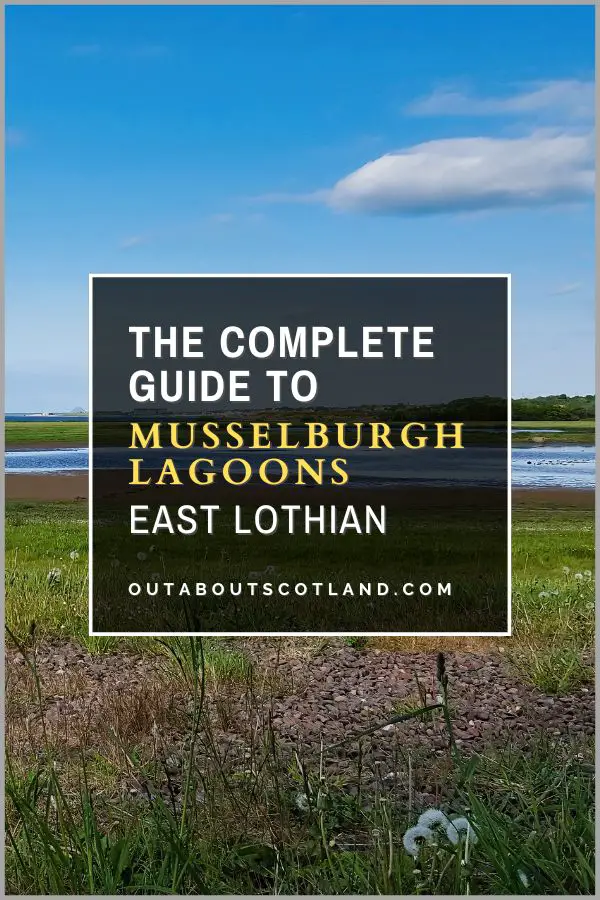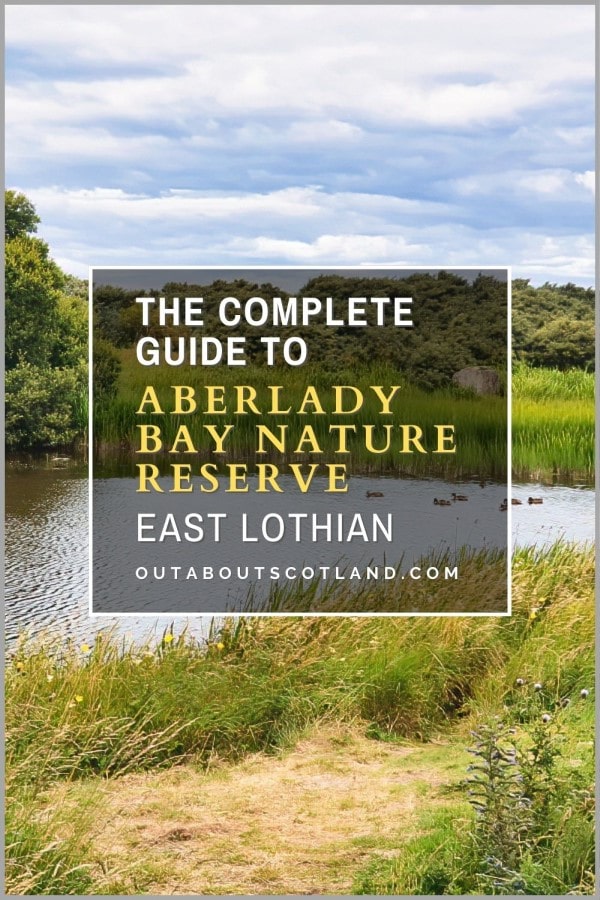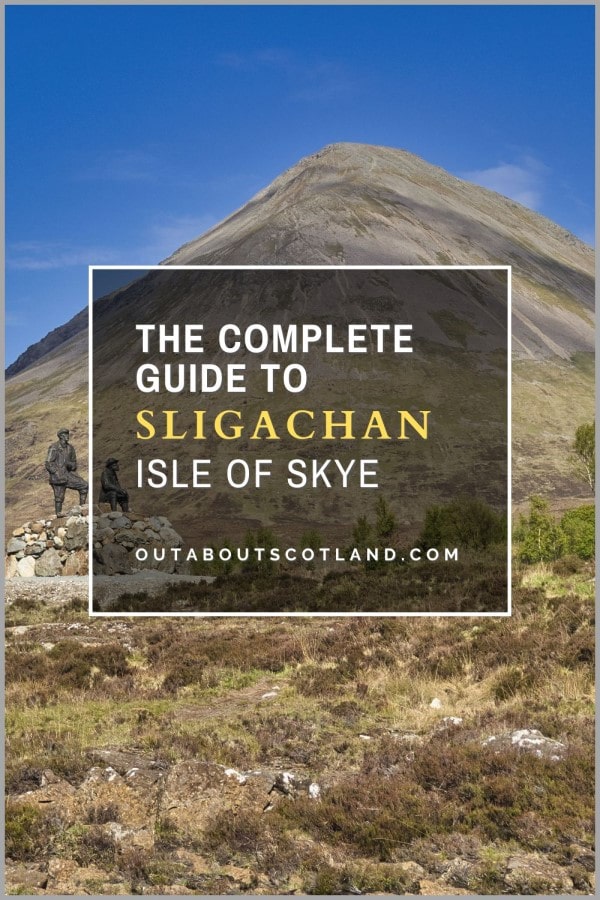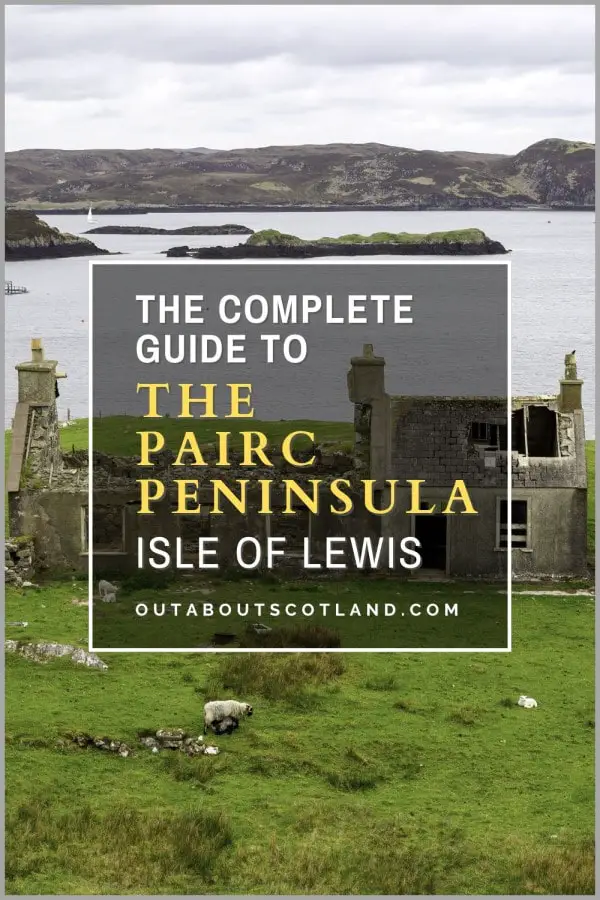The aurora borealis is one of the most beautiful phenomena in the natural world. These dancing, skipping, multi-coloured lights are caused by charged particles from the sun colliding with the earth’s magnetic field, and they are most visible in northern countries like Scotland.
In this article, you’ll discover the best places to see the northern lights in Scotland as well tips to help you find them, advice for photographing them, and information on Scotland’s fabulous dark sky parks.
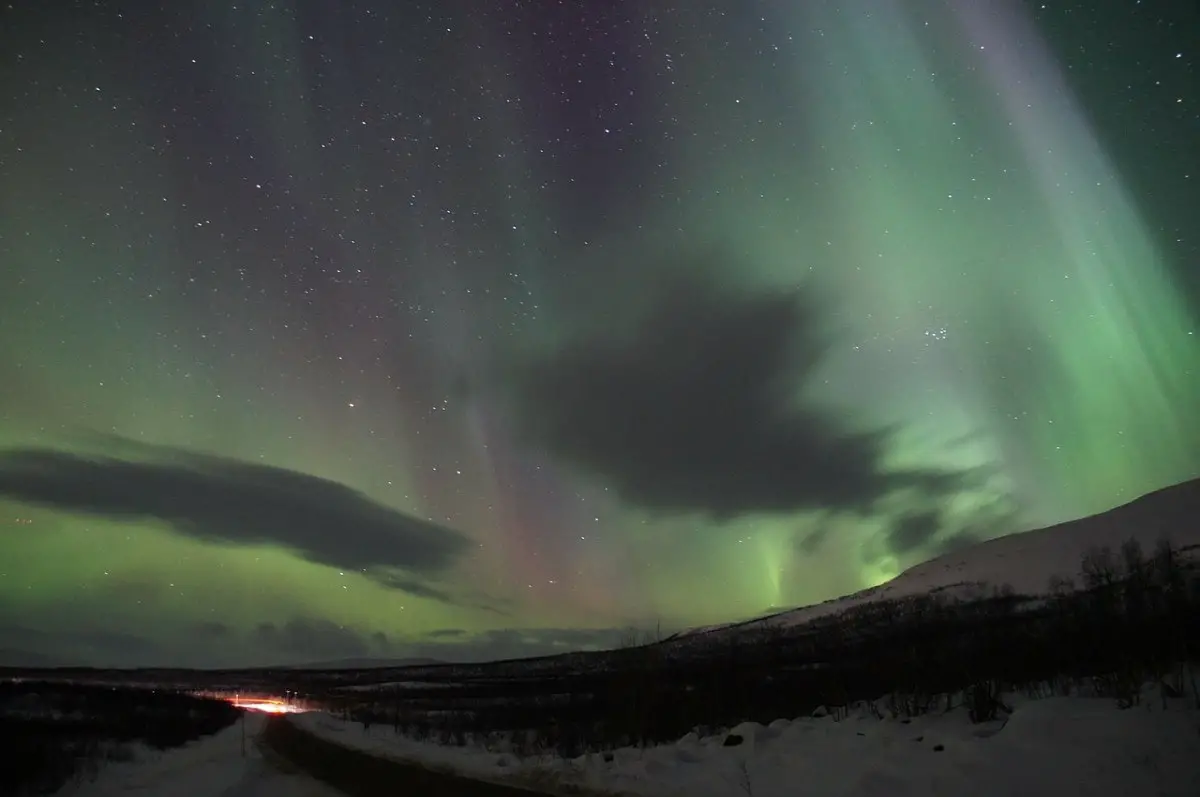
What Are the Northern Lights?
The northern lights – also known as the aurora borealis – is a naturally occurring spectacle that most people have heard of but few have actually seen. In Scotland we call these lights ‘Mirrie Dancers’ and they’re often seen in the remotest parts of the country during autumn and winter when the nights are long, cold and clear.
There’s a lot of science behind the northern lights, and having a wee bit of background knowledge about what causes them to appear can drastically improve your chances of seeing them. So what, exactly, are they?
To look at, the aurora borealis is a dancing light display in the sky comprised of shimmering bands of changing colours that range from green (the most predominant colour) to yellow, blue, and purple. Their intensity starts off as barely visible, but as the sky darkens, they become ever brighter until the flickering ribbons are replaced by intense coronas of shifting colours that are occasionally joined by arcs, rippling curtains, and shooting rays.
In actuality, activity on the sun’s surface over 92.94 million miles away is what is causing these lights. Vast solar storms are constantly erupting on the surface of our nearest star, which creates enormous clouds of electrically charged particles that travel out into the solar system.
Although the majority miss our planet, some collide and become captured by the earth’s magnetic field, which pushes them towards the north and south poles. As the particles accelerate, they slam into molecules in our atmosphere, which makes them heat and glow. The lines of the earth’s magnetic field then move the heated particles, producing those well-known wavy neon patterns in the night sky.
But what about the colours? Well, again, there’s some interesting science behind the phenomenon. The two main gases in our atmosphere are nitrogen and oxygen, and if you remember your science class at school, you’ll know that different gases radiate different colours when they’re heated.
That’s why the northern lights are usually seen as green and yellow, as oxygen produces those colours when heated, while blues and purples are caused by heated nitrogen. The quantity of these elements varies between the layers of our atmosphere, so as the solar particles hurtle towards us, they create different colours depending on which elements are heated up.
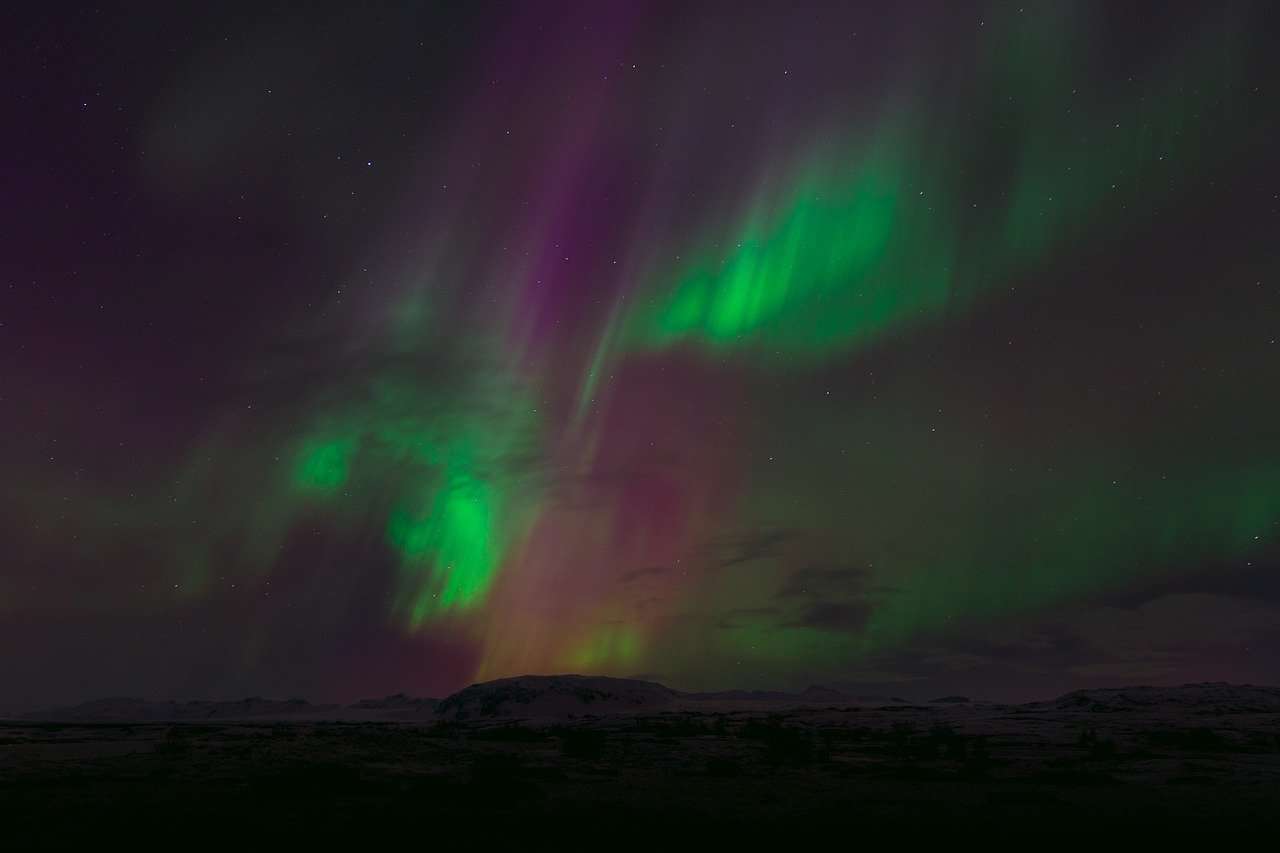
The Best Places to See the Northern Lights in Scotland
That’s the science bit over, now how to put that knowledge to good use?
First off, because the aurora borealis is concentrated at the poles they’re most visible at high latitudes which is why Scotland is such a good place to see them. The northern tip of our mainland lies at the same level as Stavanger in Norway, while our northernmost Shetland Isles are equivalent in latitude to Bergen, meaning your chances to see the lights will improve the further north you go.
Second, we are aware that the aurora doesn’t start until 80 miles (128.75 km) above the earth’s surface, so any low-lying cloud will completely block it out. Additionally, because it is so high up and faint, any nearby lights will almost entirely block it out.
Third, because the phenomena is completely dependent on solar activity we’ll have the best chance of seeing it if there are strong storms on the sun’s surface, which means we need an accurate solar forecast.
So that’s four variables that affect our ability to see the northern lights: how far north we are, how much light pollution there is, what Scotland’s weather is doing, and how much solar activity there is. I’ll cover the last two variables further down this page, but for now, let’s take a look at the best places in Scotland to see the northern lights, which are all great aurora-spotting locations with minimal light pollution.
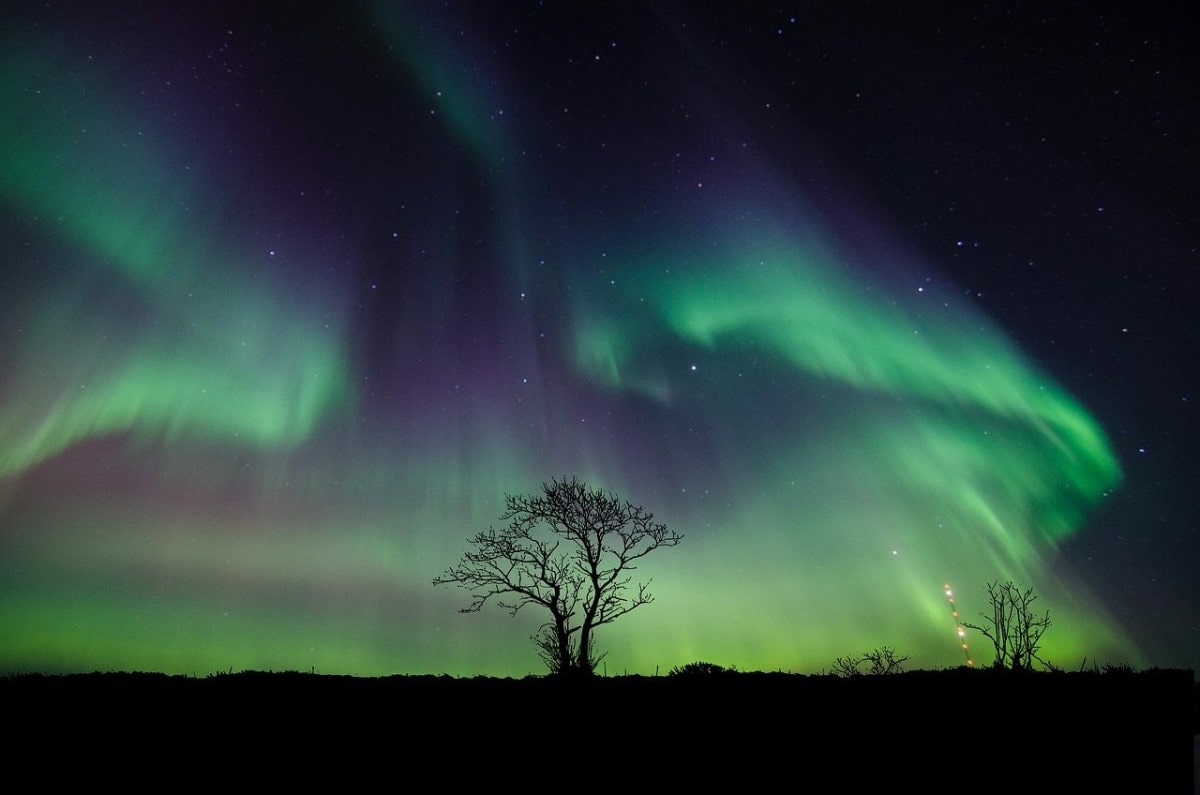
Caithness
Caithness is a region of Scotland situated on the northernmost part of the mainland facing the Atlantic Ocean and the Pentland Firth. Due to its remoteness, Caithness is only lightly populated so it’s a great place to see the night sky – as long as you stay away from the two main towns of Wick and Thurso that is.
Although they’re not exactly the biggest towns in Scotland, they still have enough light pollution to wash out the aurora borealis, but it’s easy to leave the lights behind by driving west.
From the middle of the north coast all the way around to the west coast, there are only a few villages scattered about, meaning the skies are almost completely unobscured after sunset. Coupled with the fact there are few roads in that part of Scotland, you have the makings of a first-rate Northern Lights experience.
One spot I recommend for viewing the sky is Ben Hope, or at least the area surrounding it. Ben Hope is located in a stunning landscape that’s entirely devoid of human settlements so the sky is pitch black at all times of the year.
There’s a minor road running along the eastern bank of Loch Hope that allows easy access, and if you follow the Ben Hope trail a short distance, you’ll quickly find yourself in an elevated position that’s free from trees and has open views looking towards the west.
The Isle of Coll
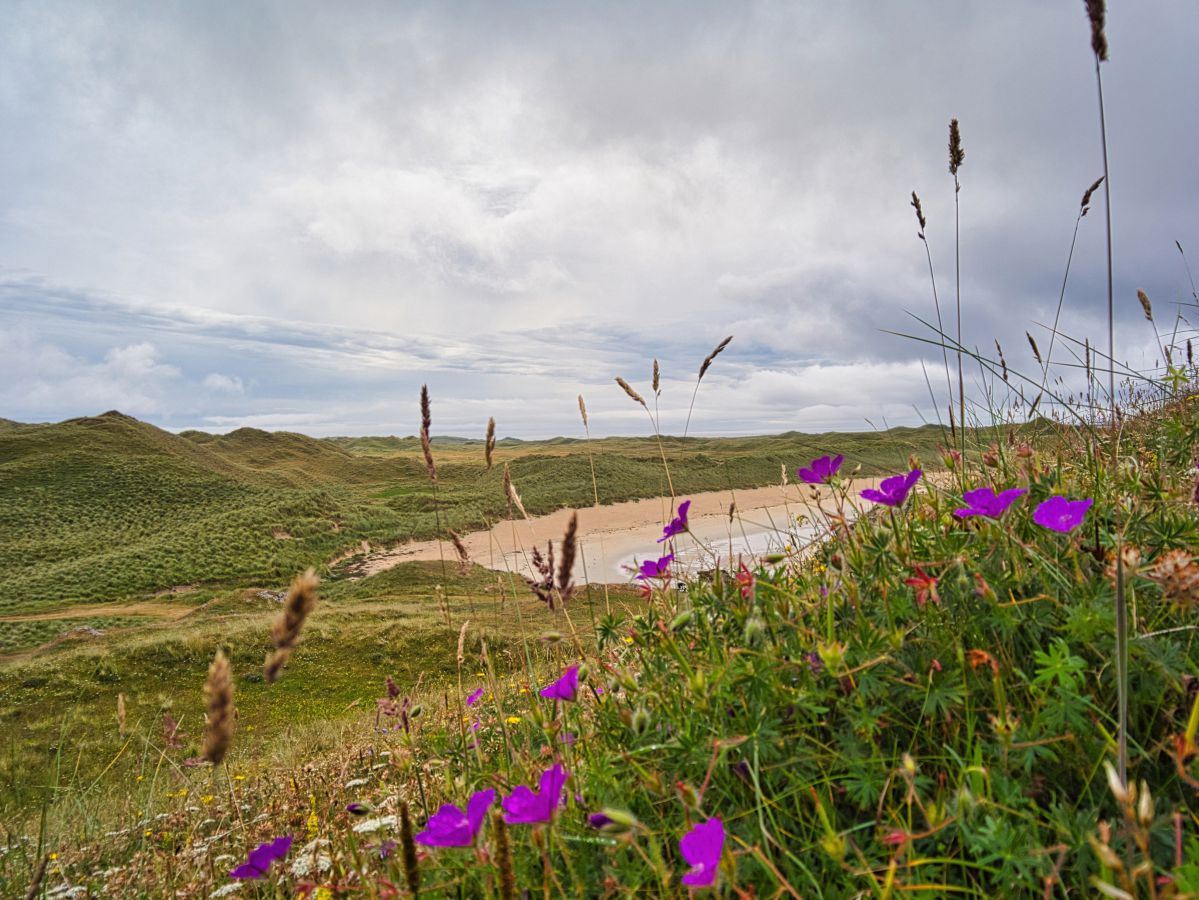
The west coast Hebridean Isle of Coll is one of Scotland’s best-kept secrets. This small island off the northern tip of Tiree sees far fewer tourists than its southern neighbour, yet it’s just as scenic, with lots of secluded beaches around its coastline and mile after of mile of heather-clad moorland in its centre.
Regular ferries from Tiree and Oban mean accessing this small island is easy (especially coming from Tiree where the sail takes less than one hour) although accommodation is sparse at best, requiring bookings to be made months in advance in order to secure a room.
Visitors to Coll will discover a wild and windswept landscape that’s eerily quiet, and also incredibly dark. In fact, Coll is so dark it was officially designated a Dark Sky Park in 2013 and is recognized as having some of the darkest skies in Europe – perfect for viewing the spectacular night skies in that region of Scotland.
Contributing to the lack of light pollution is the island’s insistence on having no street lights, and heading to the northwest tip of Coll takes visitors to an area that’s far from human habitation where the nearest street lamp is over 40 miles away!
While you can go pretty much anywhere on Coll to watch the aurora, the best viewing locations are the official night sky viewing sites at the Cliad football pitch, the Totronald RSPB nature reserve, and the hills overlooking Ariangour village.
However, having visited this beautiful island in 2023, I can personally vouch for overnight stays at the Coll Bunkhouse which runs stargazing weekend breaks that feature an indoor planetarium and expert-led courses on how to use a telescope.
Galloway Forest Park
This is the most southerly location on this list but don’t think that means there’s less of a chance to see the northern lights because Galloway Forest Park is one of the darkest places in Britain.
This vast forest lies on the west coast of Scotland (south of Ayr and west of Dumfries) in a region that’s relatively flat and lightly populated. While there are more villages here than you’ll find further north, it’s almost entirely composed of farmland, so very little – if any – light pollution manages to escape into the park.
Even if you don’t manage to see the aurora borealis there are fun times to be had in the forest thanks to an extensive network of mountain biking routes including the world-famous 7stanes trails. There are also three excellent visitor centres at Kirroughtree, Glentrool, and Clatteringshaws, so if you’re unsure where to head first you might like to visit one of the centres and ask the staff for advice.
Moray
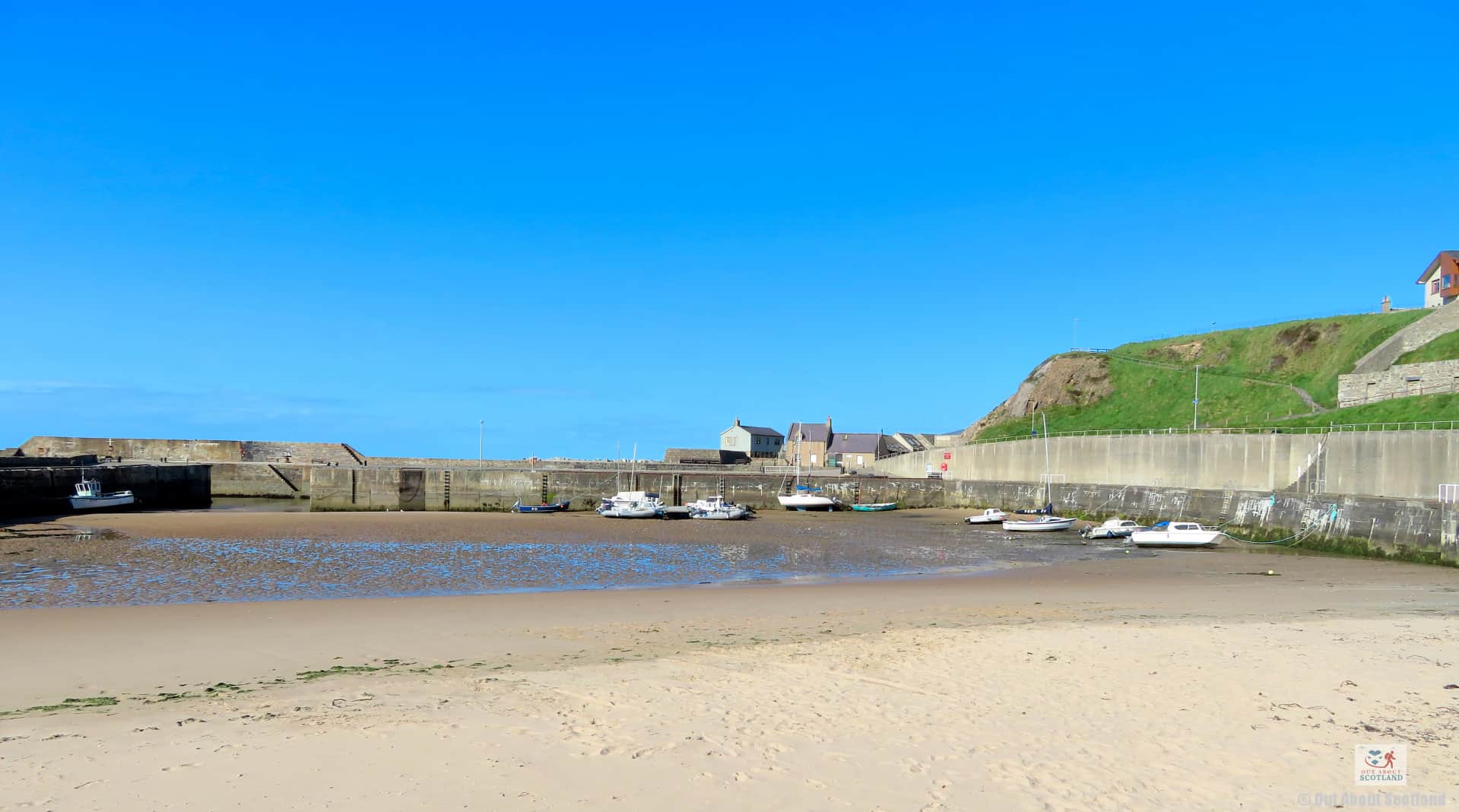
This region lies on the northeastern corner of Scotland between Banff and Nairn. The main benefit here is that there are lots of places to visit if you’re looking for a good family day out (Portsoy, Cullen and Lossiemouth spring to mind) and it’s not heaving with tourists so you can explore the region in relative peace and quiet no matter the time of year.
Because Moray lies just outside the Highland Boundary Fault the coastal region is quite flat, so you get great views looking towards the North Sea. Coupled with just a light smattering of villages, it’s possible to find lots of areas with superb inky-black night skies.
Other than being so close to Speyside whisky, one of the highlights of Moray is its position close to Ngorms National Park, especially the area surrounding Tomintoul and Glenlivet, which is home to Scotland’s second–and the world’s most northerly dark sky park.
This area is widely regarded as one of the best in the world for stargazing and the Glenlivet Estate, in particular, is a fantastic place, not just for catching sight of the northern lights but also for its forests, mountain biking trails, riverside walks, castles, and distilleries.
The Outer Hebrides
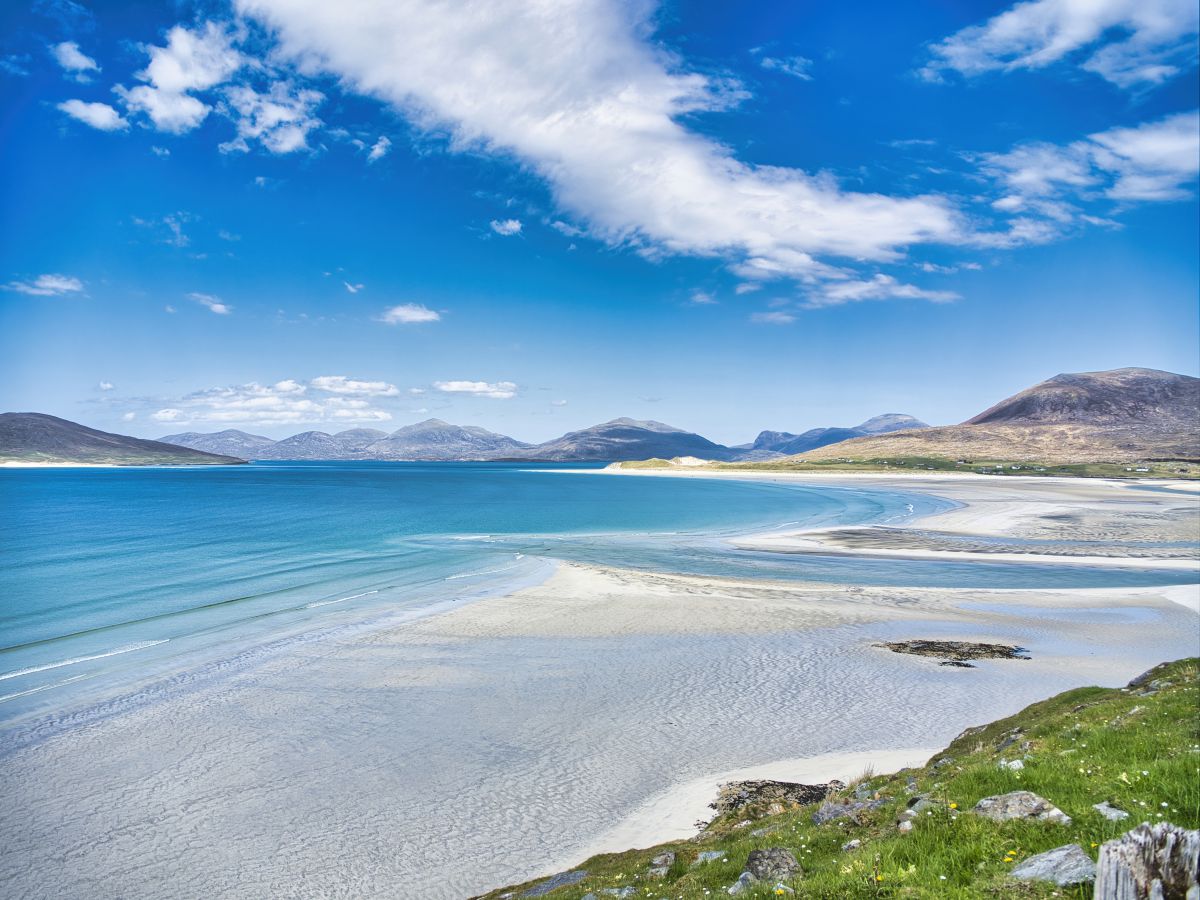
There are over 70 islands in the Outer Hebrides chain off the northwest coast of Scotland, and only 27,000 people live on 15 of them. These islands are some of the most beautiful in Scotland, especially Harris and Lewis, with their white-sand beaches, crystal-clear sea, and unspoiled landscape. As a place for watching the northern lights, Harris and Lewis take my number one spot.
Getting there isn’t particularly difficult either thanks to Stornoway airport which serves flights from Edinburgh and Glasgow, but if you’re heading south to Uist and Barra be aware the only way to get there is by ferry.
Pretty much anywhere in the Outer Hebrides is a great place for watching the northern lights, but the east coast is particularly good as the skyline is completely uninterrupted and there are roads (and ferries) allowing access to the rest of the island chain.
Shetland and Orkney
These two groups of islands lie to the far north of Scotland but they have regular ferry services from the mainland.
Shetland is an interesting enough place, but for me, Orkney pips it to the post as a tourist destination. There are over 5,000 years of history to discover on Orkney, including the ancient stone circles of Brodgar and Stenness as well as the unbelievably well-preserved ancient settlement of Skara Brae.
There’s also the small fact that Orkney can be reached in under an hour by ferry from the mainland (Gills Bay in Caithness to St. Margaret’s Hope on Orkney) as opposed to Shetland which has a 12-hour sail from Aberdeen, making Orkney much easier to hop over to with your car.
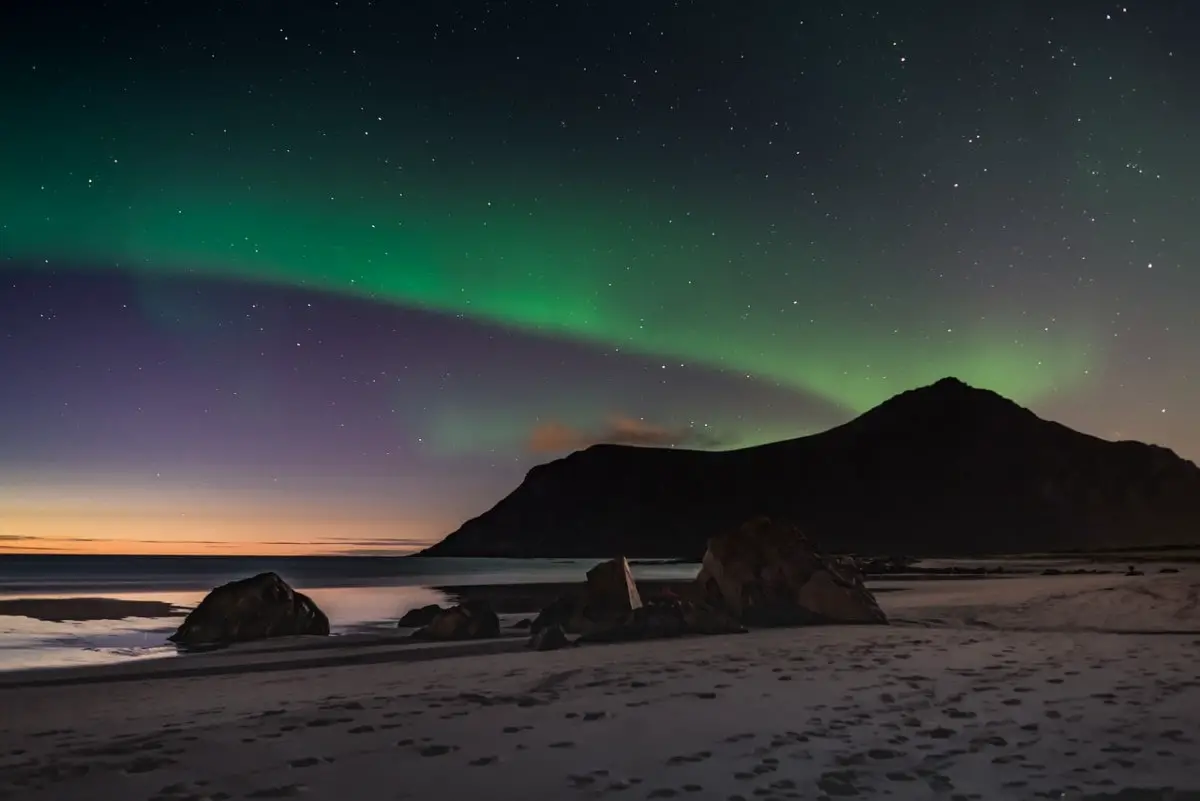
Shetland admittedly does have the largest prehistoric fort in Britain – Mousa Broch – and the islands are a third bigger than Orkney, but both are fantastic places for wildlife spotting and for bird watching they’re two of the best locations in the UK, let alone Scotland.
As far as seeing the northern lights goes, both islands are almost entirely treeless so if you can get to an elevated position you’ll have uninterrupted views in all directions. Plus, due to the fact there are only 22,000 people on each island group there’s very little light pollution.
The Isle of Skye
I have to admit I have a bit of a love/hate relationship going on with Skye. It’s a stunning place to be sure, and natural wonders like The Quiraing and The Storr are jaw-dropping, but this is one island that has sadly become a victim of its own success.
Visit at any time during peak season, i.e., May to September, and you’ll find it’s absolutely jam-packed with tourists, bringing with them all the problems of too many people in a small area.
That means it’s impossible to find accommodation unless you book months in advance, the roads are crammed with coaches, and all the most popular attractions are heaving with crowds. If you want to watch the northern lights in peace, Skye is not the place to go.
That being said, if you time it right and book your trip between autumn and spring you’ll find there are far fewer tourists and you’ll be able to enjoy the stunning landscape in (almost) peace and quiet.
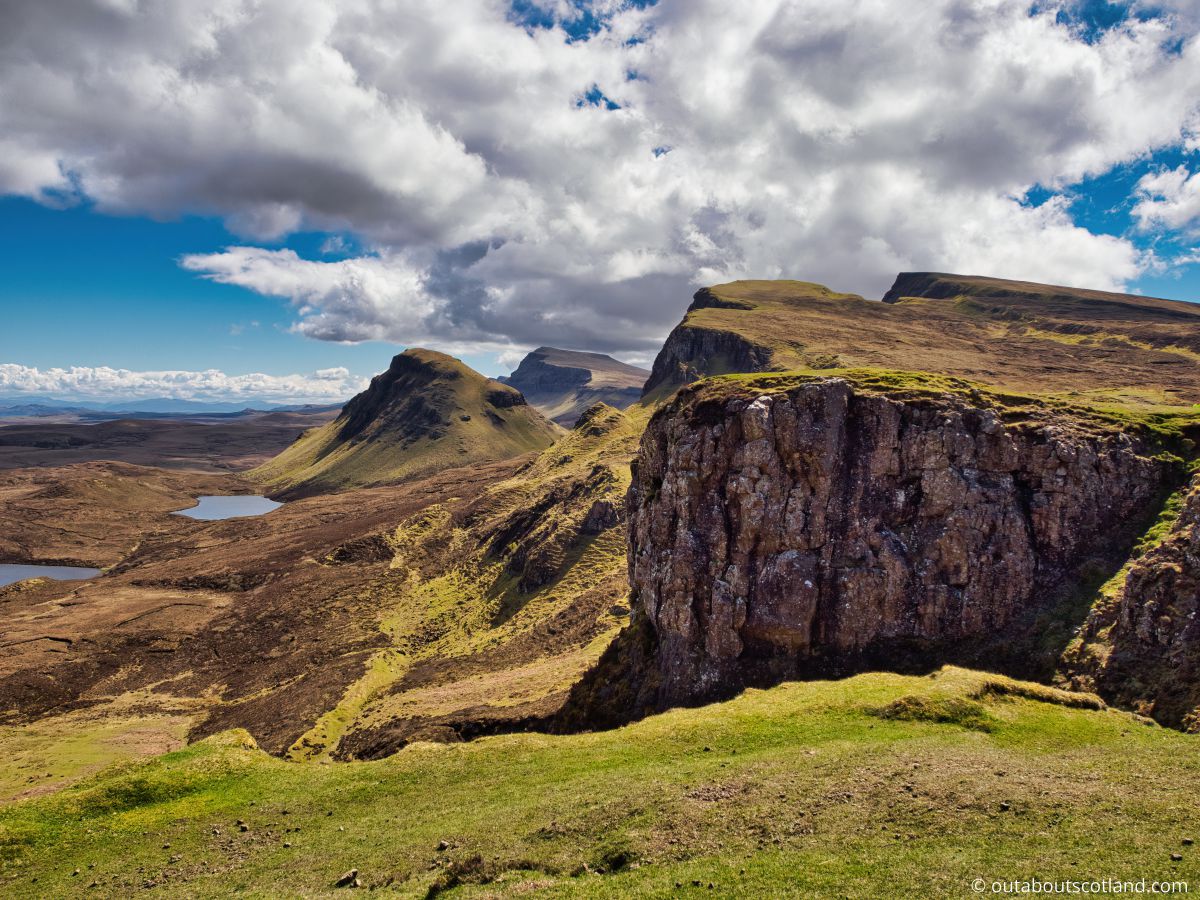
As a bonus, thanks to the Skye bridge at Kyle of Lochalsh, you can save a packet on ferry costs as well.
The northern tip of the island is highly recommended for viewing the northern lights as houses are few and far between, as is the western part of the island at Neist Point. In total, Skye is home to nine Dark Sky Discovery Sites which are places that are far from light pollution, provide good sight lines of the sky, and have good public access.
Remarkably, all nine of Skye’s Dark Sky Discovery Sites are designated as Milky Way Class, which is the darkest rating given whereby it’s possible to see the Milky Way with the naked eye. These sites are: Trumpan car park, Stein Jetty car park, Knockbreck Primary School car park, Kinloch Forest, Kylerhea, Camas na Sgiandin, and Clan Donald steadings.
Cairngorms National Park
The Cairngorms National Park is a breathtakingly beautiful area that covers over 1,748 square miles, making it the largest national park in Britain. It’s situated in the eastern part of the Highlands and is home to a diverse range of mountains, lochs, and wildlife.
As a place to get away from the hustle and bustle of everyday life, the Cairngorms is hard to beat.
Hikers will have an amazing time climbing peaks like Ben Macdui which stands at an impressive 1,309 meters, as well as other notable mountains including Cairn Gorm, Braeriach, and Lochnagar. The park is also home to several beautiful lochs including Loch Morlich, Loch an Eilein, and Loch Garten.
Loch Morlich is particularly popular with visitors because of its sandy beach and crystal-clear water and it’s a great place for swimming, kayaking, and paddleboarding – not something you’d expect to do in the middle of a mountain range!
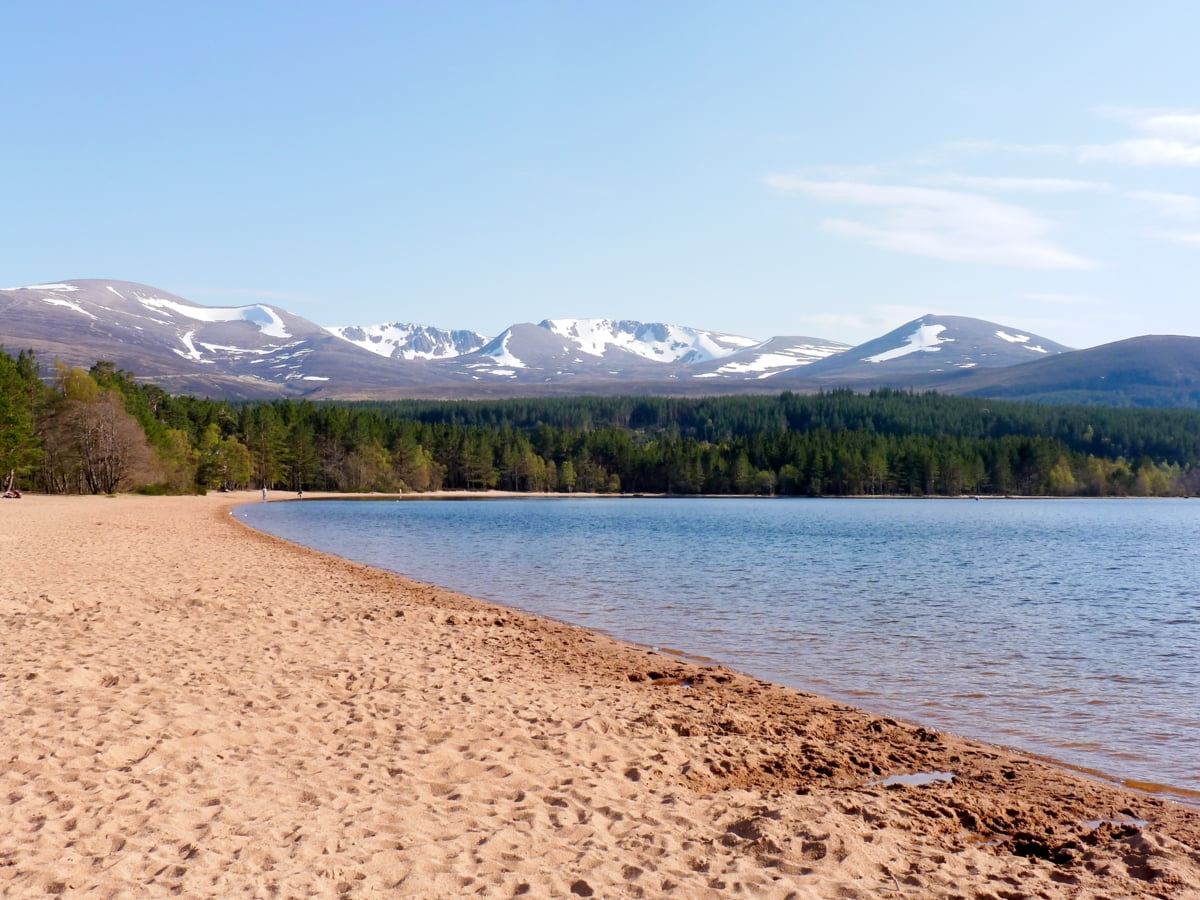
Those visitors that prefer wildlife watching will be in for a treat at the Cairngorms as it’s a stronghold for many of Britain’s rarest animals including the territorial capercaillie, pine martens, and Scottish wildcats. It’s also one of the only places in the country where you can interact with free-roaming reindeer, courtesy of the Cairngorm Reindeer Center in Glenmore Forest Park.
With regards to the Northern Lights, thanks to the thinly-spread human population it’s possible to experience the true inky blackness of space free from light pollution across the entire park, although there are a couple of places that are darker than most.
The Glenlivet Estate (Ballindalloch AB37 9EX) is a great location for watching the Mirrie Dancers, as is anywhere in the Abernethy National Nature Reserve (Nethy Bridge, PH25 3EF). Both of these areas have just a few villages nearby and have plenty of roadside spaces with unobstructed views of the sky.
An alternative location is the Muir of Dinnet National Nature Reserve. This reserve is located on the east side of the Cairngorms, so it’s easier to get to from Aberdeen, and if you walk around to the east side of Loch Kinord, you’ll have only a few hills blocking the view looking north.
Northern Lights Forecast
Monitoring solar activity is a science in itself, and many online resources monitor and compile data to predict the best times to see the aurora borealis. In fact, solar forecasts are now so advanced they can predict with a high degree of accuracy the chances of seeing the lights hour by hour.
Many of these online resources use data compiled by hobbyists so there’s often a minor difference between the forecasts, which is why I recommend taking a look at two or three to get an average prediction before heading out into the cold night air.
The most popular of these forecasts are:
There are also apps you can download onto your mobile device that present forecasts about the northern lights in a format that’s easier to understand (i.e. less technical) than most of these websites. Two of the best apps are Aurora Borealis Forecast & Alerts and My Aurora Forecast.
For weather forecasts to avoid those infamously cloudy Scottish skies, you’re spoilt for choice, but my personal recommendation is to check the Met Office website as it’s usually pretty accurate.
What Is a Dark Sky Park?
Light pollution is an increasing concern for the environment for a number of reasons. Little more than 100 years ago you could walk outside at night and see the vast expanse of the Milky Way with its thousands of pinpricks of light, even in a city.
Today, unfortunately, the situation is very different and starlight is almost completely washed out in towns and cities. Even in the countryside, you’ll only see a tiny fraction of the stars in the night sky, and of course, trying to see the northern lights is almost impossible anywhere there are houses.
This constant overpowering man-made light has other negatives too, including its disruption to animals’ ability to navigate and the effects of sleep deprivation in humans due to a reduction in melatonin. Thankfully, environmental campaigners are fighting back, and there are now areas of the world that are protected from excess light pollution, two of which are the Cairngorms and Galloway Forest Park.
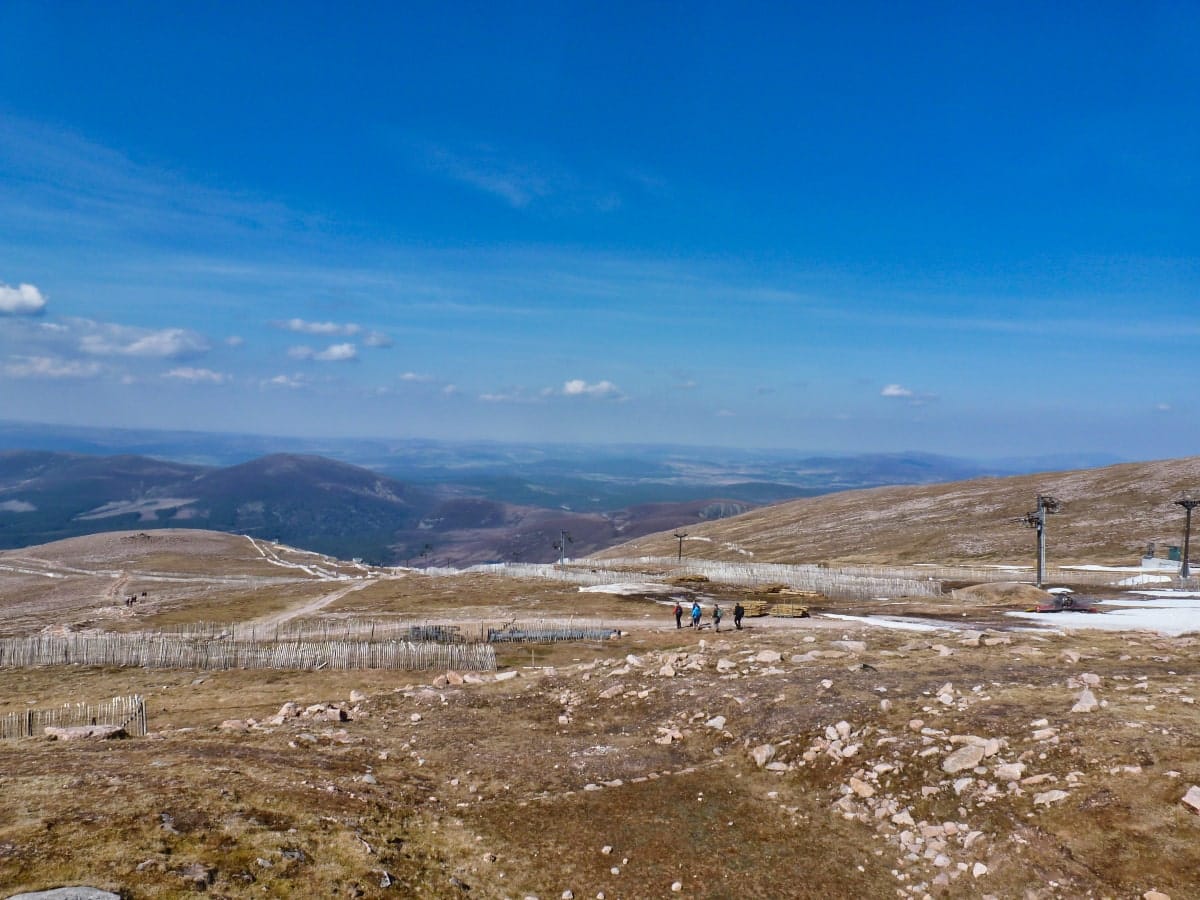
These two regions are designated as dark sky parks which means they have exceptionally dark skies thanks to the careful management of man-made lights.
Galloway Forest Park was the first place in the UK and the fourth in the world to be given this accolade as there are hardly any people that live in the 300 square miles of the forest. That means the sky is almost pure black when the sun retreats and over 7,000 stars and planets become visible to the naked eye.
If you’ve never seen the night sky when there’s no light pollution you’re in for a real treat if you visit one of Scotland’s dark sky parks. The number of stars you’ll see is nothing short of breathtaking and they’re the perfect place for stargazing and watching the aurora borealis come alive.
If you’d like to find out more about dark sky parks, head on over to the International Dark Sky Association website where you’ll find lots of information about the impact of light pollution on our planet as well as the work that’s being done to combat it.
Tips and advice for watching the Northern Lights
1. Know the Solar Cycles
The key to viewing the northern lights is knowing that the sun goes through different phases of activity, each of which is called a solar cycle. These cycles last, on average, 11 years, and they have stages that range from very quiet to very active. Quiet stages are referred to as solar minimum, and active stages are referred to as solar maximum.
As you’ve probably already guessed from the name, your best chance of seeing the northern lights is when the sun is at its solar maximum stage, as that’s the time when the most charged particles are flung out into space towards the earth.
It’s obviously good to know when these cycles occur but it basically boils down to the fact that the last cycle ended in 2019 and the current solar cycle will continue ramping up until it reaches solar maximum in July 2025.
After that, the sun will slow its activity levels again until the solar minimum is reached in 2030. While you might see the aurora in Scotland in the years surrounding the solar minimum, you’ll have the best opportunities in the years on either side of the solar maximum.
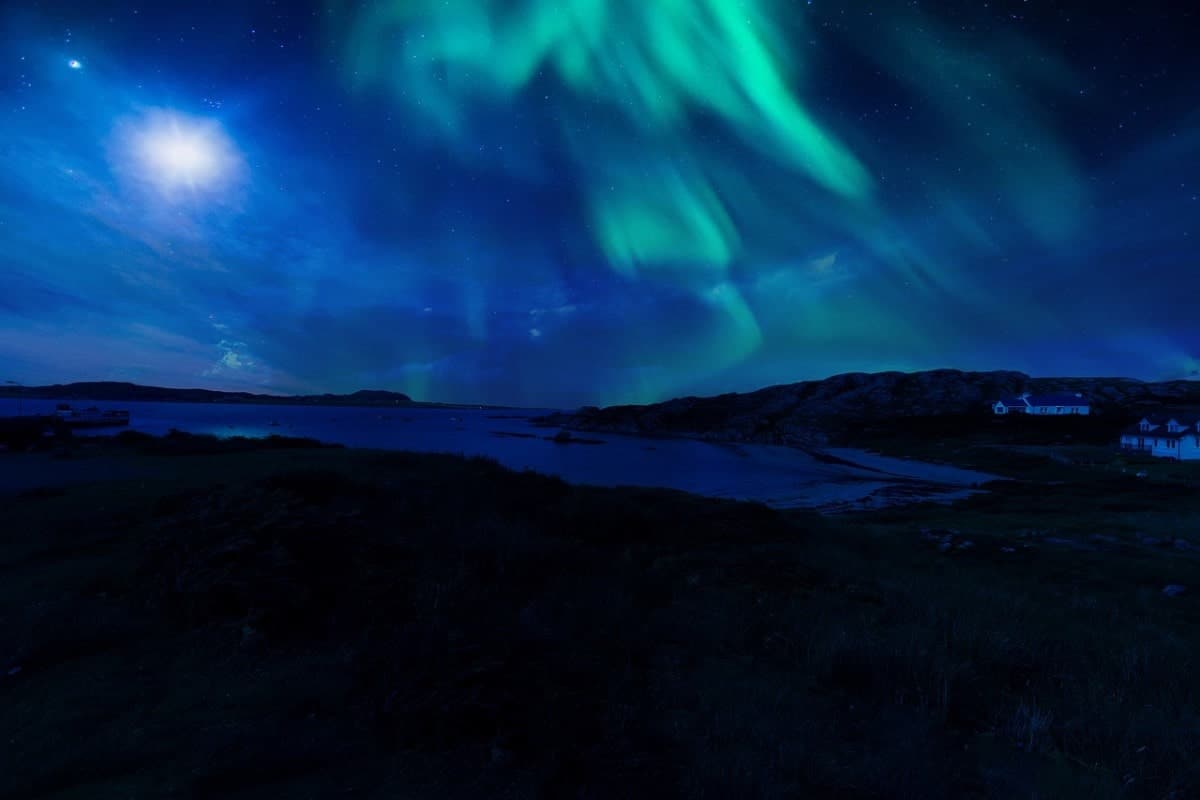
2. Understand the KP Index
If you look at any website dedicated to the aurora borealis or solar activity in general, there will almost certainly be a reading that indicates the likelihood of seeing the phenomena. This reading is called the KP index, and understanding it is essential to make the most of the many websites dedicated to the northern lights.
As mentioned earlier, the further north you go the more likely you are to see the northern lights because the charged particles thrown our way by the sun are concentrated at the poles.
The index ranges from 0 to 10 and it describes how strong the sun’s activity is. So if, for example, the KP index was 0 (the lowest level of activity) you would need to be close to the North Pole to see any lights. As the sun’s activity increases the KP index rises, with each increase in level indicating an extra 350 km in latitude south from the North Pole where you can see the northern lights.
Bear in mind the KP index rating of a location doesn’t change, and here in Scotland we have a rating of KP 5 for the northern mainland out to the Shetland Isles, and a KP rating of 6 for the tip of the northernmost mainland down to the Scottish Borders. So in a nutshell, the next time you check a solar activity forecast and you notice there’s a KP index of 5 or 6, there’s a good chance you’ll be able to see the northern lights in Scotland.
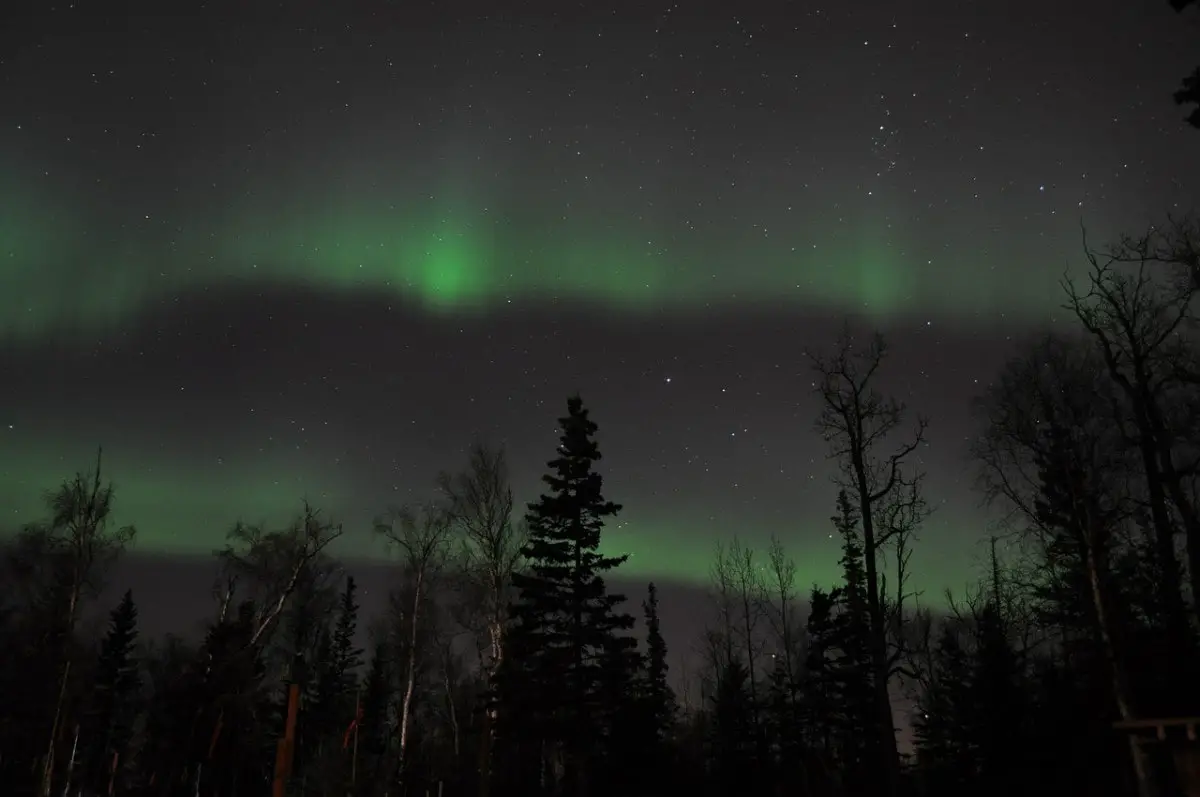
3. Maintain Your Night Vision
When the sun’s activity is strong, the aurora appears as bright, dancing ribbons of colour that fill the sky. In reality, however, for the most part, the lights are quite faint and get fainter the further south you go. That’s the reason I mentioned dark sky parks earlier in this article, as even the slightest amount of light pollution can completely ruin your chances of seeing the lights when the KP index is low.
One of the biggest advantages you can give yourself, other than finding a viewing spot as far north as possible and as far away from towns and cities as possible, is to make sure you don’t lose your night vision. It can take up to an hour for your eyes to fully adjust to the dark, but they will lose the adaptation within a couple of minutes of being exposed to bright lights, so there are a couple of points to keep in mind when you’re aurora-hunting.
First off, do not look at your phone screen unless you absolutely have to, and even then only if you’ve set the brightness down to a bare minimum. Even the lowest setting can be too bright for your eyes once they’ve adjusted, but there are light-dimming sheets (Amazon link) that you can place over the screen to cut down on all that annoying screen glare.
Likewise with torches, they’ll ruin your night vision within a few minutes of use, so I recommend not switching them on unless you absolutely have to.
That being said, premium torches come equipped with red filters that don’t affect your eyes, so if you’re serious about seeing the northern lights and you’re heading out into the middle of nowhere, you’ll find a red light torch (Amazon link) an invaluable tool.
How to Photograph the Northern Lights
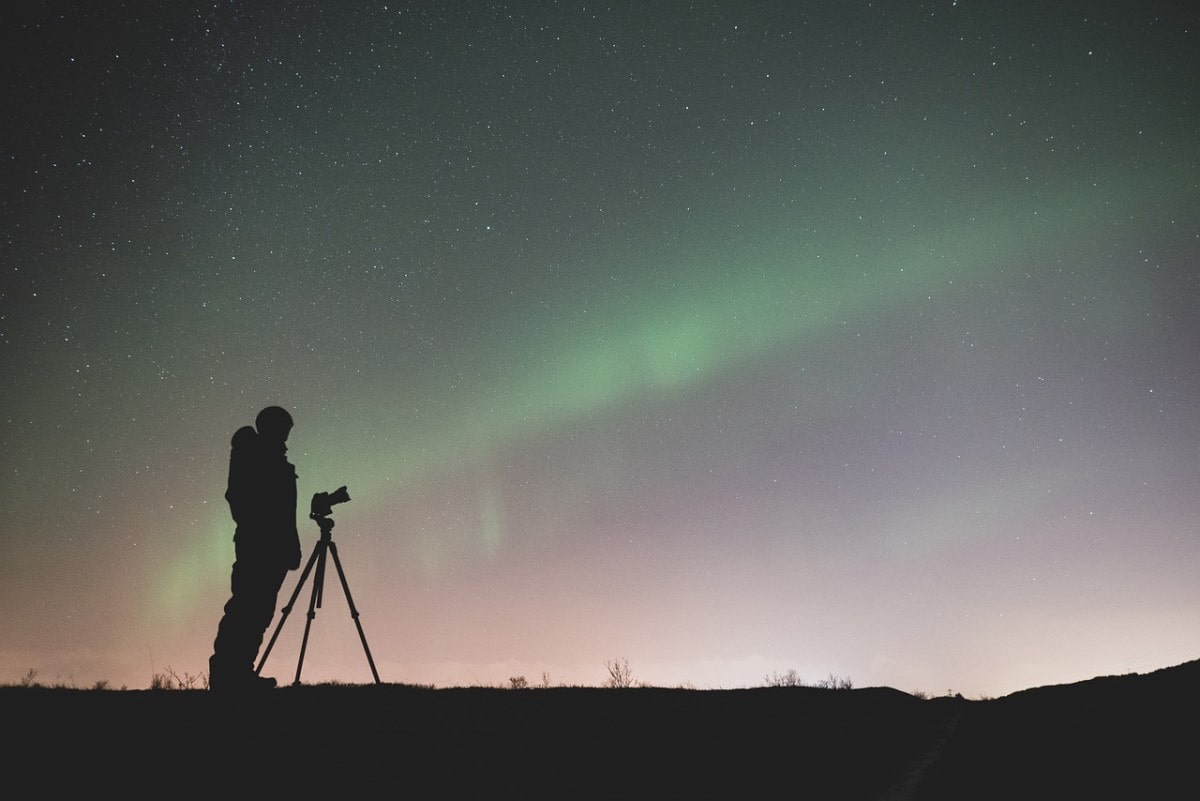
It’s all very well to go to the trouble of roaming the wilds of Scotland in order to see the aurora, but wouldn’t it be nice to take a few photos of the experience as well? You may well think it’s an impossible task for a novice photographer, but if you’ve got a little know-how under your belt, you’ll be able to take Instagram-worthy shots that will amaze your friends and family.
But before you whip your camera out, you need to be aware of a few things. First, it’s going to be nighttime (well, obviously…), and that means it’s going to be cold, so you’ll need to make sure you’re wearing warm clothes which include gloves, preferably fingerless so you can operate your camera.
Second, you should forget about trying to capture the aurora with your phone because the tiny sensor will struggle with long exposures and the noise will almost certainly ruin the shot. While top-end phone cameras are getting better year by year, they still can’t compete with even a cheap mirrorless camera.
Although you’ll get the best images with a full-frame sensor, I use a Micro Four Thirds (MFT) camera and still manage to take decent photos. Note that all the following camera specs are based on MFT so you’ll need to double the numbers for full-frame gear.
As far as the lens goes I use a 10 mm F2 from Laowa (20 mm F4 full-frame equivalent) but if you have an even faster lens then all the better. Photographing the night sky is all about getting as much light into the sensor as possible so I recommend using at least an F2.8 aperture.
If you don’t want to spend £300+ on a premium lens I can confirm the 7artisans 7.5 mm F2.8 (Amazon link) also does a good job.
You’ll notice both these lenses are very wide-angle, and there’s a good reason for that. For astrophotography, there’s a rule about how long you can keep the shutter open before the rotation of the earth makes the stars blur, which is:
500 / lens focal length = Exposure time.
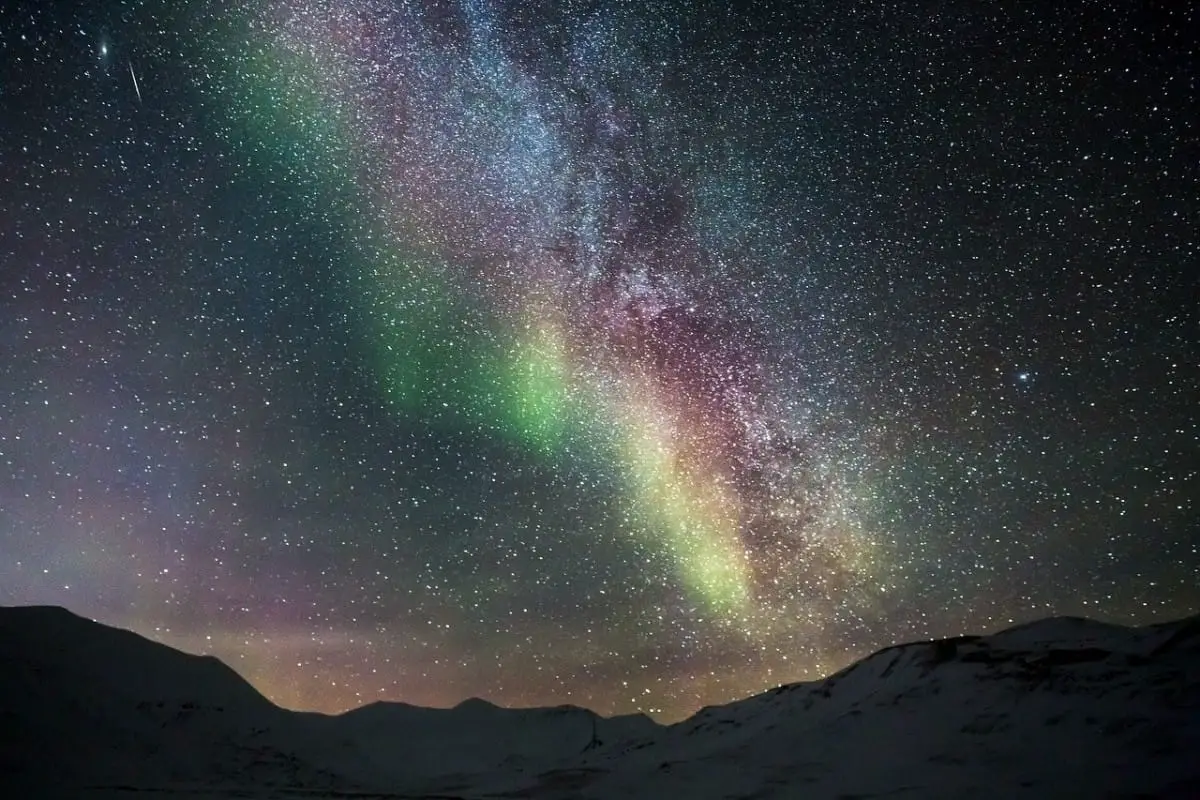
This is for full-frame, so if you have an MFT camera you’ll have to double the focal length. A quick bit of math with my Laowa 10 mm lens gives us 500 / 20 = a maximum of 25 seconds, whereas a 25 mm MFT lens (50 mm FF equivalent) would only allow a maximum 10-second exposure, i.e., 500 / 50 = 10.
A long exposure is great for stars, but the aurora is constantly moving, so you need to balance the two. As a rule of thumb, anything from 2 to 10 seconds should be enough to pick up lots of detail in both the aurora and the stars.
The last thing to consider for the lens is to open it up to its maximum aperture to allow the most light in and set the focus to infinity so that everything will be in focus, from the foreground to the background.
To set up your camera, attach it to a tripod and adjust the angle till you find a scene you like the look of. The old two-thirds composition rule works great for shots of the night sky so try to fill the upper 2/3 of the frame with the sky and the lower 1/3 with the ground.
Next, level the left/right tilt of your camera using the on-screen inclinometer or a bubble level. You can buy bubble levels from Amazon for a few quid, but you’ll need a torch to see them in the dark, which is why I prefer to use the camera’s built-in indicator.
Set your camera’s ISO to a setting that’s as high as possible without creating a noisy mess. You’ll probably want to do a bit of research online for your specific camera, but for my Olympus EM1 I tend to use ISO 1600. You should also set your camera to capture RAW, as you’ll have much more flexibility in editing compared to shooting JPEGs.
Finally, set your camera to fire on a timer which will help reduce the vibration when you press the shutter button. A 5-second delay should do the job nicely.
Note that these recommendations are really just guidance to use as a starting point for your nighttime photos, and for your first few shots, you might like to play around with the ISO and shutter speed till you work out what works best for your set-up.
Frequently Asked Questions
What is the best time of day to see the northern lights in Scotland?
Being a natural phenomenon the northern lights appear randomly in Scotland, but you’re more likely to see them when the sky is darkest. Due to its high latitude, Scotland has short nights in summer and in places like the Shetland Isles it barely gets dark at all.
The following times of day in Central Scotland are an indication for when it’s dark enough to see the northern lights.
September
Sun rises 5.22am
Sun sets 7.11pm
October
Sun rises 6.20am
Sun sets 5.52pm
November
Sun rises 7.23am
Sun sets 4.37pm
December
Sun rises 8.23am
Sun sets 3.49pm
January
Sun rises 8.47am
Sun sets 3.53pm
February
Sun rises 08.11am
Sun sets 4:51pm
March
Sun rises 7.08am
Sun sets 5.51pm
Can you see the northern lights in Edinburgh and Glasgow?
It’s very unlikely to see the northern lights in Edinburgh or Glasgow, although that isn’t to say it never happens. If the aurora is particularly strong, it can be seen over the capital city when there is little moonlight, but only in those elevated areas that are away from street lights.
The best locations for seeing the northern lights in Edinburgh are Calton Hill, Blackford Hill, and Holyrood Park.
The northern lights are very rarely reported in Glasgow but they might be visible away from the city centre in places like Pollock Country Park
What time of year is best to see the northern lights in Scotland?
Solar activity can create the aurora borealis at any time of the year, but your ability to see it is dependent on how dark the sky is.
Therefore, in Scotland, it’s best to view the lights in autumn and winter (from September to March) when the nights are longest and the skies are darkest.
Can you see the northern lights with the naked eye?
You can see the northern lights with your naked eyes, but only in conditions where there is very little ambient light and virtually no light pollution.
It is almost impossible to see the northern lights during the day as sunlight will completely wash out the colours of the aurora.

